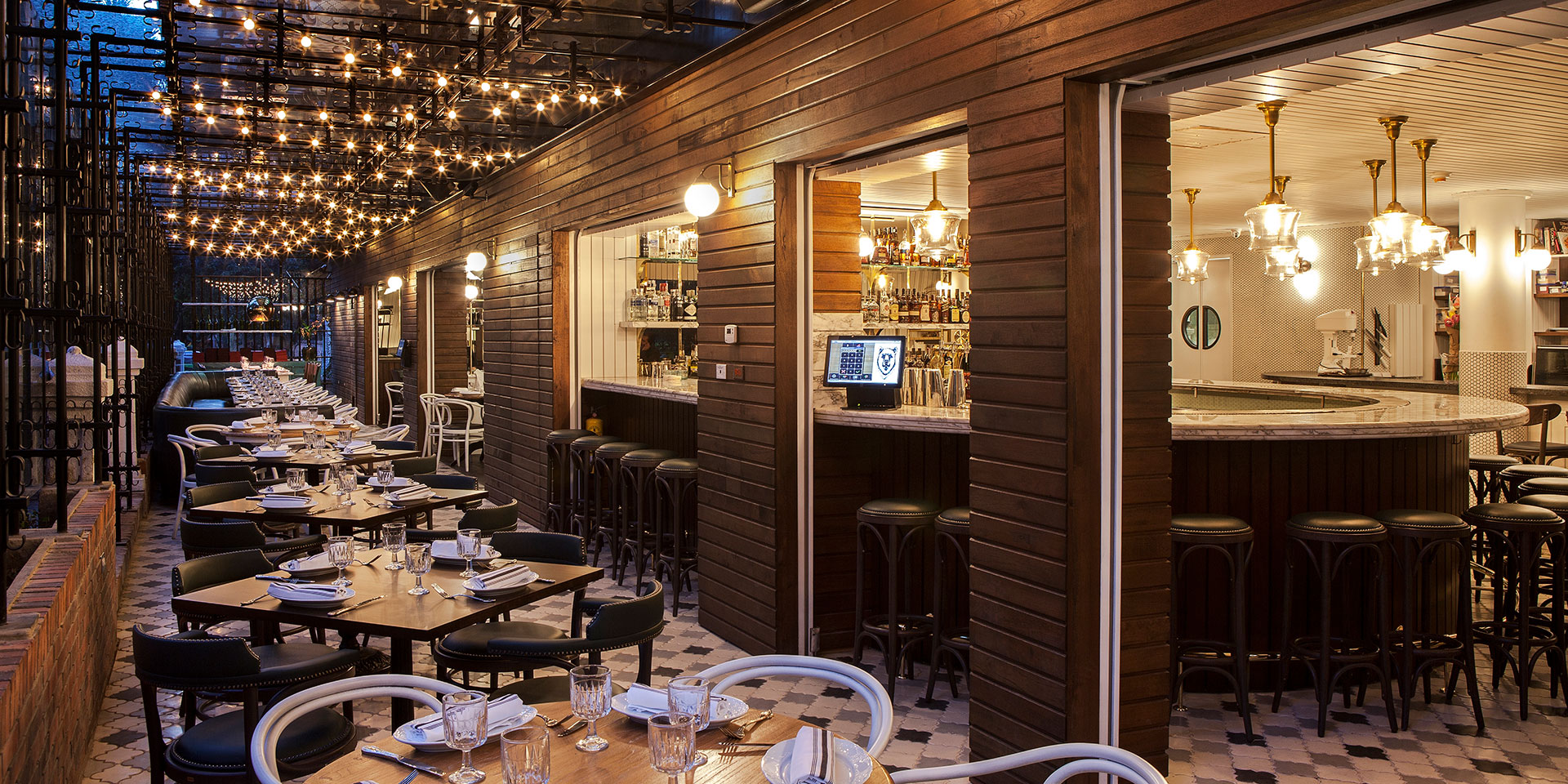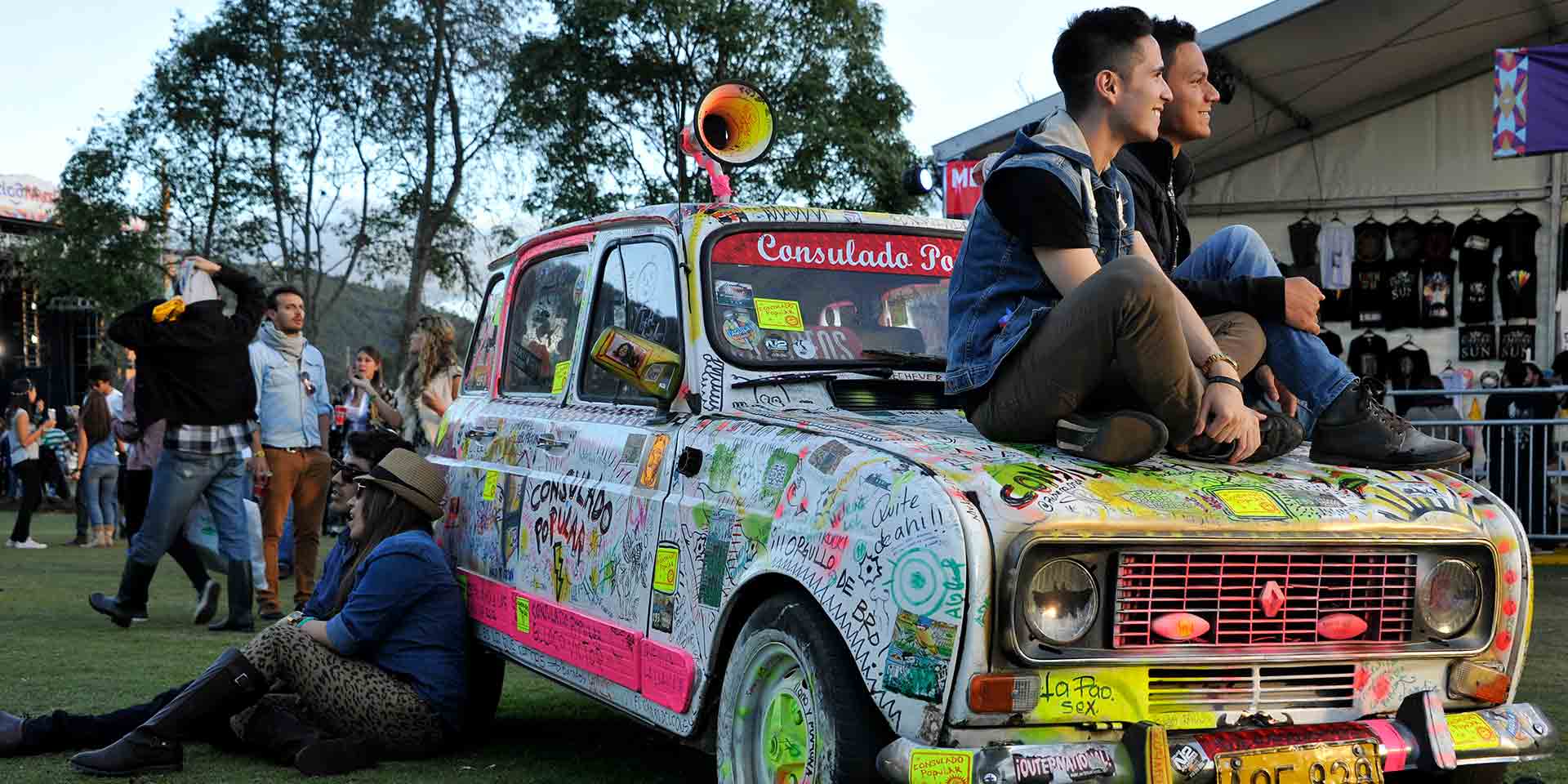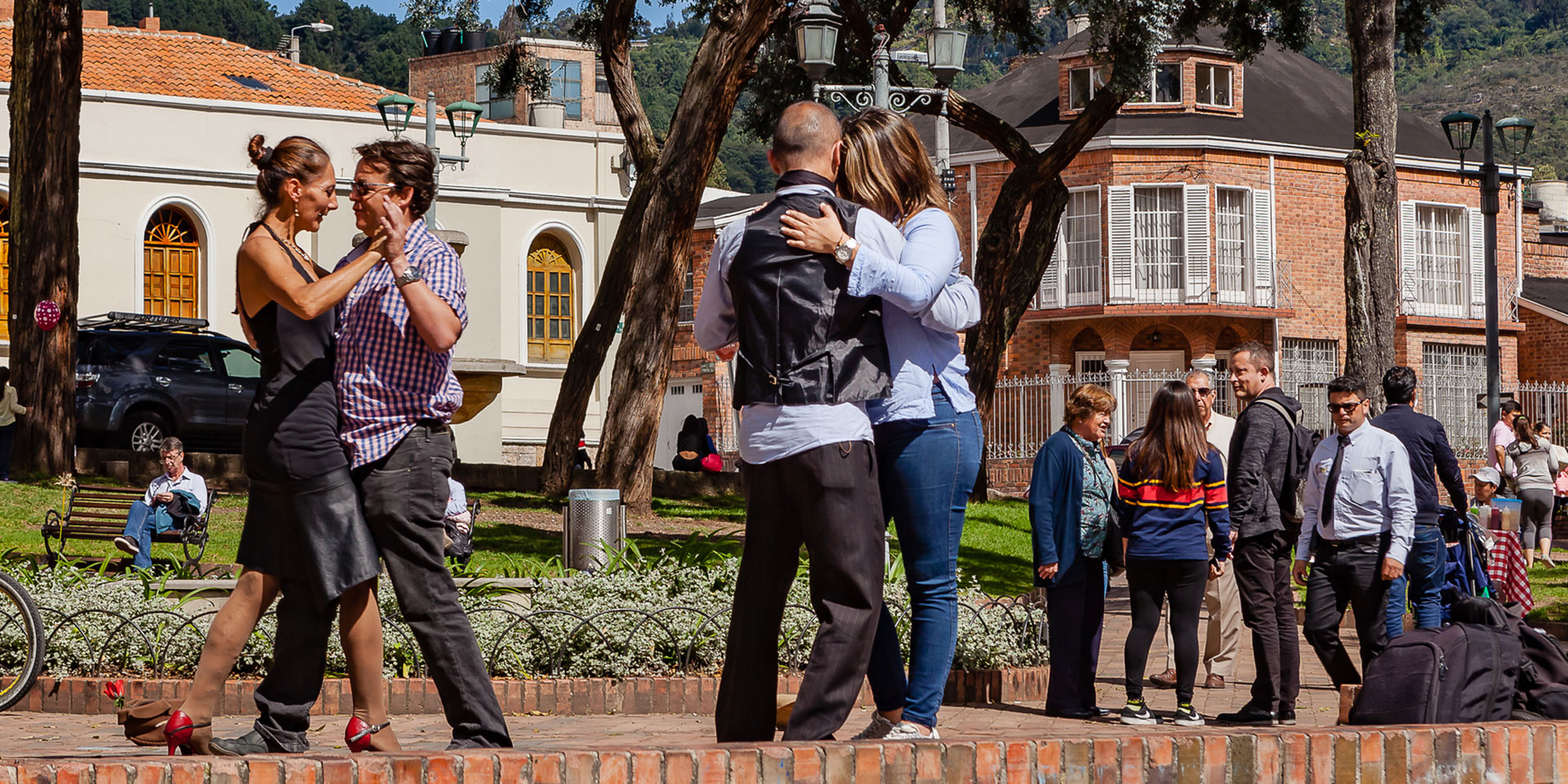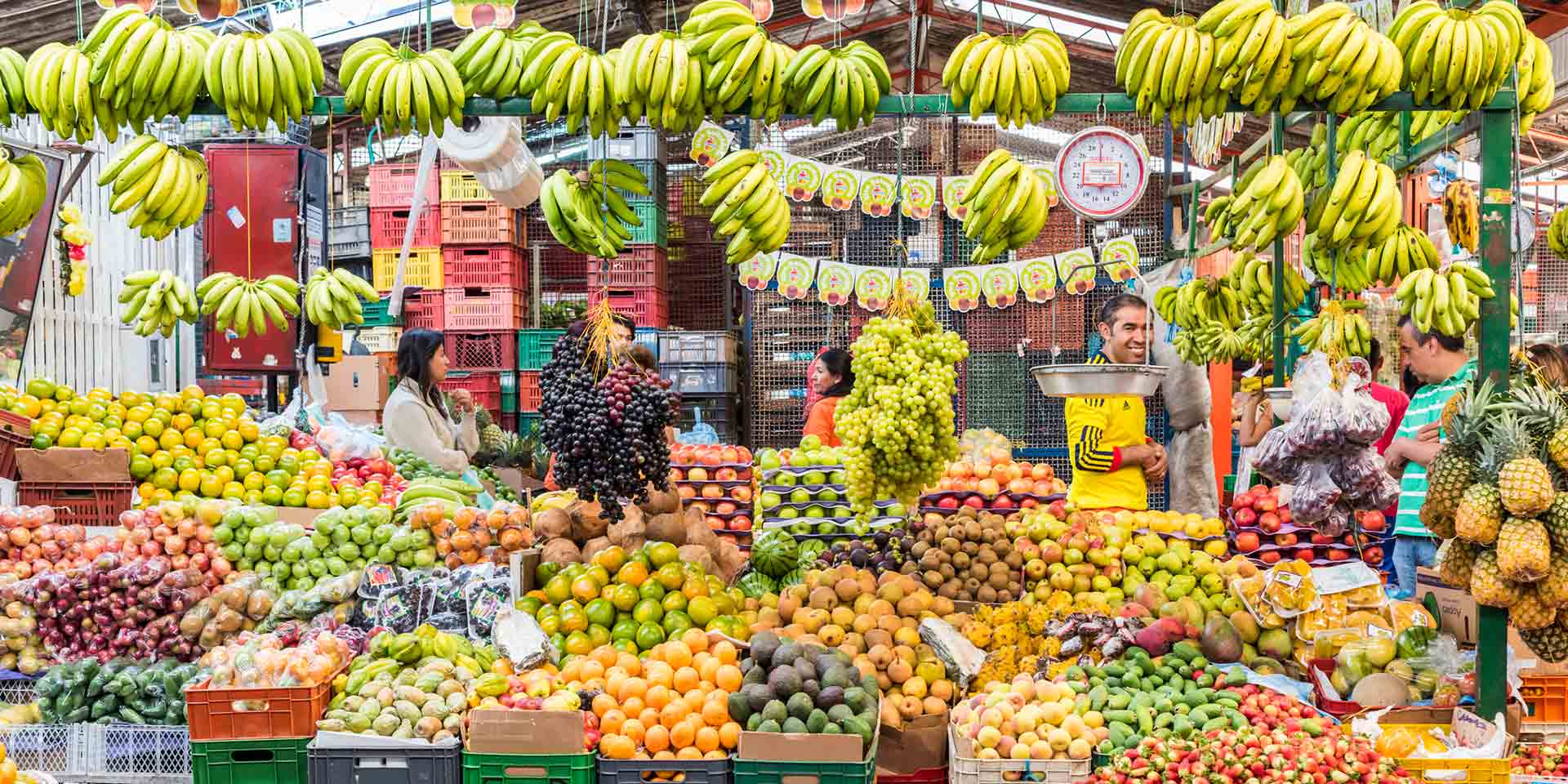
Shop for colorful produce at Paloquemao Market. (Photo: Getty Images)
Bogota3 Days in Bogotá: What to See and Do
By Stephanie GranadaColombians are known for their gregarious personality and knack for living the good life. Join them while partaking in the vibrant range of food, cultural centers, galleries, markets and public spaces, on a three-day jaunt through Bogotá, the country’s capital. Between the welcoming hosts, verdant landscape and tasty offerings, don’t be surprised if you end up wanting to move here for good.
Day 1: Take in the sights, then get out of town
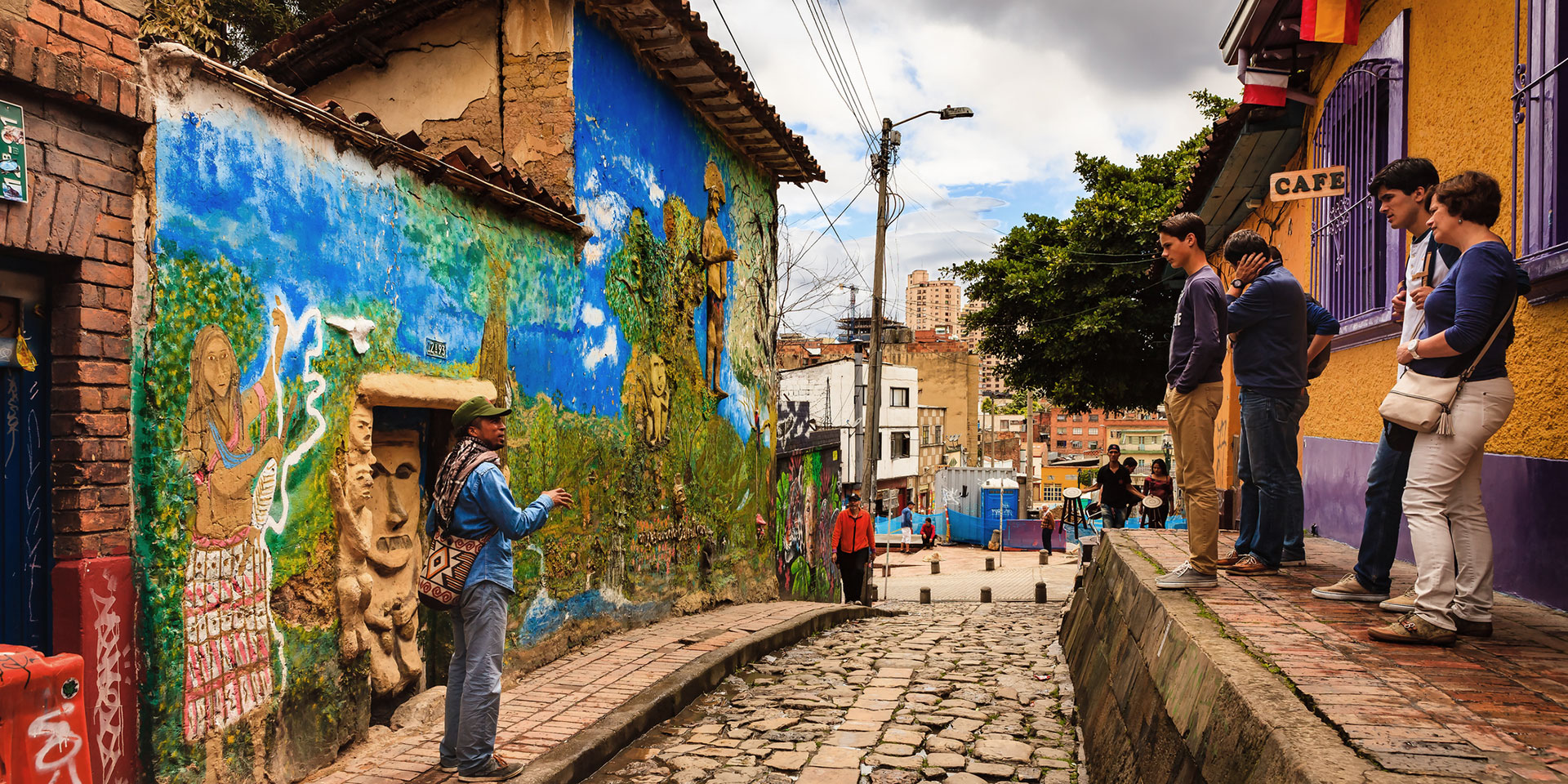
La Candelaría represents the best of Bogota’s past and present. The main draw is the neighborhood’s colonial architecture, which dates back to the 16th century and houses a mix of cultural institutions—Museo del Oro, the free Museo Botero (a tribute to the work of Colombia’s most famous artist), and Teatro Colón, to name a few—and modern galleries (the Graffitour leads you through street art and eclectic art hubs). Nearby, the La Macarena neighborhood is returning to its bohemian roots with the renaissance of independent galleries like Alonso Garcés and NC-arte.
After the cultural circuit, hit the road toward Chia—about 40 minutes outside of town—to Andrés Carne de Res. The restaurant, which started with four tables, now spans more than 6,000 square meters decked out in repurposed relics. The vibe is more funhouse than eatery. The play area has a rock climbing wall, art supplies, puppet shows, and babysitters to entertain the kiddos. Grilled meats are the house specialty, but a 72-page menu ensures there’s really something for everyone, even non-carnivores.
Day 2: See-and-be-seen in the trendiest ‘hoods
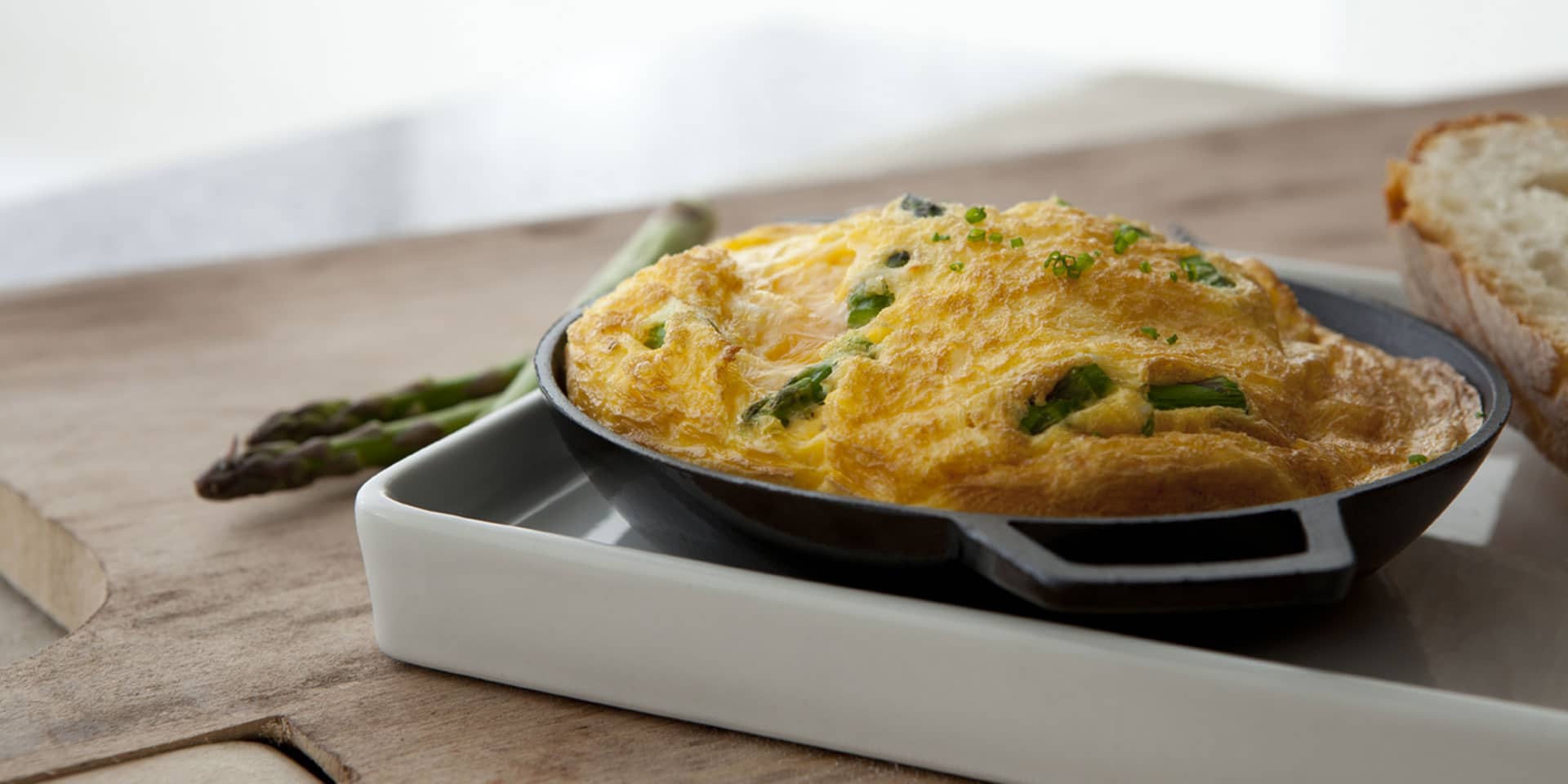
Any time of day you’ll find locals socializing throughout the happening enclaves on the eastern side of the city. Artisan bakeries are on the rise for breakfast, and there are a handful—like Brot and Masa—clustered on Calle 81 (a.k.a. “la calle del pan” bread street). Down the road, Parque de la 93 has good people watching in the 30-year-old green space that anchors the posh neighborhood.
Go for lunch at Pesquera Jaramillo for crowd-pleasing seafood, or walk to Uva if you’re craving a healthy, superfood-powered meal. Make your way toward Zona Rosa, where designers like Pepa Pombo and Amelia Toro have outposts for their coveted designs (the latter draws inspiration from traditional Colombian and Latin American textiles), alongside dozens of indie boutiques.
For dinner, choose from any of the celebrated eateries in the Zona G neighborhood. Nazca, El Cielo, and Harry Sasson are all pricey, but worthy options that draw inspiration from international influences and techniques. Round out the tour in the Quinta Camacho area with a cocktail at EightySix—an elegant bar inspired by Death & Co. in New York, where the owner once worked.
Day 3: Hop on two wheels and shop like a local
Ciclovías—in which major roads are shut down for bikers, jogger, and walkers—are said to have started in Bogotá. Every Sunday and holiday Monday, locals take to the streets for this city-wide adventure. Rent a bike from Bogotravel Tours (which also offers great guided rides throughout the week) and follow the masses past food and drink vendors who stand ready to help you refuel after all your hard work.
Stock up on souvenirs at local markets. El Tour de la Fruta through the Plaza de Mercado Paloquemao educates visitors about rare eats found at the outdoor fruit and veggie bazaar. On Sundays and holiday Mondays, Usaquén hosts two flea markets: Mercado de las Pulgas, around the park, where handcrafted and imported tchotchkes are sold, and the Buendía Exposición Artesanal, near Seminario Valmaría church, where young makers sell their chic wares.





